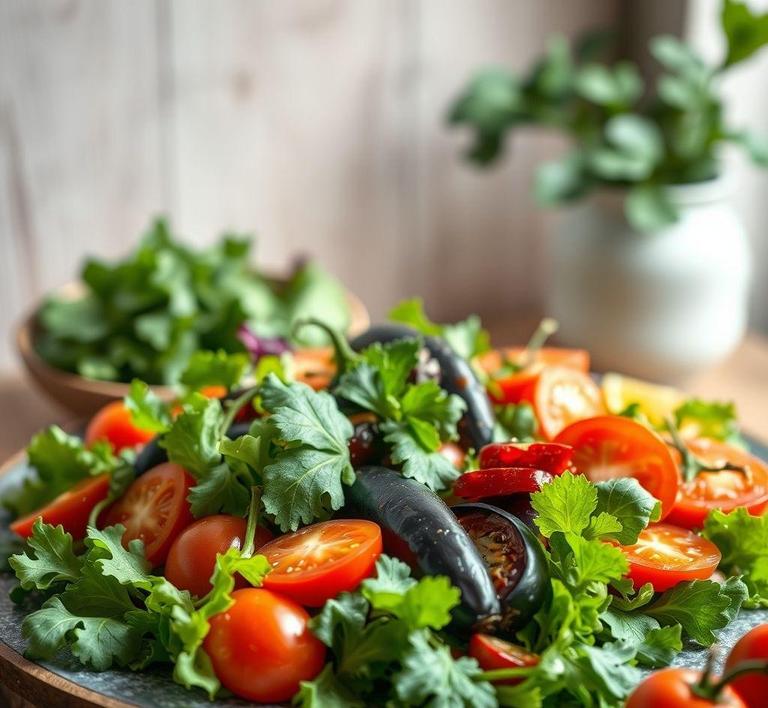When it comes to plant-based food, knowing how to properly refreeze can save you time, money, and reduce food waste. Refreezing plant-based items, like fruits, vegetables, or prepared meals, can help maintain their nutritional value and flavor if done the right way. However, it’s important to keep in mind that not all plant-based foods react the same to freezing and refreezing, and mishandling them can lead to texture changes or loss of taste. This guide will walk you through the best practices for safely and effectively refreezing plant-based food, so you can enjoy your favorite meals without compromising quality!
Can You Refreeze Plant Based Food?

Yes, you can refreeze plant-based food-but with some important caveats. The safety and quality of refreezing any food largely depend on how the food was handled after it was first thawed. Unlike animal-based foods, which carry a higher risk of bacterial contamination like Salmonella and Listeria, plant-based foods-especially those that are cooked or processed-are generally safer to refreeze if they haven’t been left at room temperature for more than two hours.
Plant-based foods encompass a broad category: fresh vegetables, fruits, legumes, grains, meat substitutes made from soy or pea protein, and prepared meals like vegan lasagna or lentil curry. Each of these foods behaves a bit differently under freezing conditions. For example, raw vegetables and fruits have a high water content, and refreezing them may cause cellular damage, resulting in a mushy or watery texture. On the other hand, cooked grains or legumes, and meat substitutes with stabilizers, tend to hold up better upon refreezing.
In essence, refreezing plant-based food is safe if the food was thawed properly (i.e., in the refrigerator) and not kept at unsafe temperatures. However, quality and texture may degrade with each freeze-thaw cycle.
How To Refreeze Plant Based Food?
To successfully refreeze plant-based foods without sacrificing too much quality or safety, follow these careful steps:
-
Evaluate the Condition of the Food:
- Check for any signs of spoilage: sour odors, slimy texture, discoloration, or off flavors.
- If the food was thawed in the refrigerator and hasn’t been exposed to the danger zone (40°F/4°C – 140°F/60°C) for over two hours, it should be safe to refreeze.
-
Portion Wisely:
- Divide the food into small, usable portions before refreezing. This not only reduces waste but also minimizes the number of freeze-thaw cycles the food endures.
-
Use Airtight Packaging:
- Repack the food using freezer-safe, airtight containers or vacuum-sealed bags. Remove as much air as possible to reduce the risk of freezer burn.
-
Label and Date:
- Clearly mark each container with the name of the food and the date it was refrozen. Aim to consume it within 1 to 3 months for best quality.
-
Freeze Quickly:
- Set your freezer to its coldest setting a few hours before placing the food back in. Rapid freezing preserves the structure and taste of plant-based foods more effectively.
-
Avoid Multiple Refreezing:
- While it’s safe to refreeze food once under proper conditions, repeated thawing and refreezing can degrade both texture and nutrition. Use it soon after the first refreeze.
Quality Impact
The biggest compromise when refreezing plant-based food is not safety-it’s quality. Freezing causes water inside the food to form ice crystals. These crystals puncture the plant cell walls, especially in water-rich produce like zucchini, berries, or spinach. The first thaw is usually manageable. But a second freezing amplifies that damage, often resulting in limp, mushy textures, separated sauces, or dry, grainy meat substitutes.
Flavor can also take a hit. Seasonings might taste more muted, and the food could lose its original vibrancy. For instance, refrozen tofu may become excessively sponge-like and absorb too much sauce unevenly during reheating. Likewise, a refrozen plant-based stew may become watery as previously frozen vegetables leak more moisture into the mix.
Nutrient degradation is a concern, too. Water-soluble vitamins such as vitamin C and some B vitamins can diminish with repeated freezing and thawing cycles. While the calorie content stays largely the same, the nutritional integrity of your plant-based food may not.
Refreezing plant-based food is a practical and generally safe strategy when handled properly, but it’s not without trade-offs. The key lies in smart handling: thaw in the fridge, freeze quickly, and limit refreezing to only once. While your food won’t become unsafe, the texture, taste, and nutritional value may deteriorate with each cycle.
If you’re dealing with leftovers or large meal preps, consider freezing in small portions to avoid unnecessary thawing. Ultimately, while refreezing plant-based foods can be a helpful way to minimize waste, it works best when done thoughtfully-with an eye toward both safety and sensory satisfaction.
Is It Safe To Refreeze Plant Based Food?
The short answer: Yes, under the right conditions, refreezing plant-based foods can be safe. However, the long answer involves several layers of consideration-food safety, texture, nutritional value, and overall quality.
Unlike animal-based products, which are more prone to rapid bacterial growth, many plant-based foods have a higher tolerance for the freeze-refreeze cycle due to lower fat and protein content, both of which are more susceptible to degradation and contamination. That said, safety hinges not on the ingredients alone but rather on how the food was handled after it was thawed.
If the plant-based food was thawed safely-meaning it was kept in the refrigerator at or below 40°F (4°C) and wasn’t left at room temperature for more than two hours-it can typically be refrozen without posing significant health risks. On the other hand, if the food was left on a countertop or warmed up (even partially) and then allowed to cool again, bacteria such as Listeria or Salmonella can multiply quickly, even in plant-based dishes.
One particularly critical detail is whether the food was commercially prepared (such as frozen veggie burgers or meat alternatives) or homemade. Commercially prepared foods are often flash-frozen, a process that drastically limits microbial activity, making them more forgiving of the refreezing process-again, as long as they are thawed under refrigeration.
Signs That Plant Based Food Should Not Be Refrozen
Even when dealing with foods that are generally considered safer to refreeze, there are key red flags that signal it’s best to discard rather than refreeze:
-
Off Smell:
A sour, musty, or fermented smell can be a strong indicator of microbial growth. This is particularly true for tofu, plant-based milk products, or anything that contains legumes or grains.
-
Slimy or Sticky Texture:
If your food feels unusually slimy or sticky (think marinated mushrooms or soaked jackfruit), it’s a strong sign that bacterial activity has begun, and refreezing will only trap these contaminants in place.
-
Color Changes:
Darkened, blotchy, or faded colors, especially on leafy greens, vegan proteins, or sauces, suggest oxidation or spoilage.
-
Ice Crystals and Freezer Burn:
While these do not directly indicate spoilage, excessive ice crystals could mean the food has thawed and refrozen already, potentially multiple times. This not only ruins texture and flavor but also raises concerns about consistent temperature control, which can compromise safety.
-
Sour or Unusual Taste:
This usually shows up only after you’ve cooked or reheated the food-but if something tastes “off”, trust your senses and don’t repackage or freeze it again.
Common Refreezing Mistakes
Refreezing plant-based foods requires some finesse. Here are some common pitfalls that people unknowingly fall into:
-
Refreezing After Room-Temperature Thawing:
This is perhaps the most dangerous misstep. Even if food “looks fine”, bacteria double rapidly between 40°F and 140°F. Plant-based items like vegan mayo, dairy-free cheeses, or anything with added moisture (like stews or pasta dishes) are especially vulnerable.
-
Refreezing Without Checking Moisture Levels:
Foods like cooked lentils, mashed vegetables, or marinated tofu can absorb a lot of moisture during thawing. Refreezing them as-is can lead to soggy, mushy textures and poor taste. Always remove excess liquid before refreezing.
-
Using Improper Packaging:
Many people reuse the same bag or container, even if it has been punctured or poorly sealed. This allows freezer burn, which compromises quality and may introduce contaminants.
-
Ignoring the Clock:
Food that’s been in the fridge for several days after thawing should not be refrozen. A good rule of thumb is: if it’s been more than 2-3 days since thawing, it’s no longer safe to refreeze.
-
Mixing Old with New:
Combining thawed ingredients with fresh ones and then freezing the entire dish might seem like a timesaver. But this can cross-contaminate your fresh ingredients and reduce the overall shelf life of the meal.
Tips And Tricks
Here’s how to navigate the refreezing process like a pro, ensuring both safety and quality are preserved:
-
Label Everything:
Keep a marker and tape near your freezer. Write down when the food was first frozen, thawed, and refrozen. This helps you track shelf life and avoid unnecessary risk.
-
Portion Before Freezing:
Divide large batches into individual or small-meal portions. This way, you only thaw what you need and avoid having to refreeze leftovers.
-
Use Airtight Containers or Vacuum Sealers:
Minimize exposure to air and moisture. Glass containers with silicone lids, freezer bags with double seals, or vacuum-sealed pouches are ideal.
-
Blanch Before Freezing (for Veggies):
For plant-based ingredients like broccoli, spinach, or green beans, blanching them briefly in hot water before freezing (or refreezing) can kill surface bacteria and enzymes that lead to spoilage.
-
Freeze Quickly:
The faster food freezes, the fewer ice crystals form, which reduces texture damage. Spread items out in a thin layer if possible, or use the "quick freeze" setting on your freezer.
-
Use Refrozen Foods Quickly:
Refrozen foods don’t last as long as those frozen only once. Aim to consume them within 1-2 weeks after refreezing for best results.
Conclusion
Refreezing plant-based food is a nuanced topic that blends science, safety, and culinary intuition. While it is generally safer than refreezing animal-based foods, it’s not entirely risk-free. Success lies in your awareness of how the food was handled, how long it was thawed, and whether any signs of spoilage are present.
By recognizing red flags, avoiding common mistakes, and using smart freezing techniques, you can extend the life of your plant-based meals without compromising on safety or quality. Remember: when in doubt, throw it out-but with proper handling, you’ll find that refreezing can be a safe and practical tool in your kitchen arsenal.


